Studies show that retirement plans are a benefit the vast majority of employees want. In fact, 81 percent of workers say they would like it if their employer enrolled them in a 401(k) automatically. Despite this, a mere 22 percent of employers actually do so.
So what accounts for the disconnect? In many cases, business owners, and especially small business owners, are intimidated by the prospect of employee retirement plans. Admittedly, retirement plans can seem complicated. They can also involve high administrative costs and various fees.
If you take time to learn a little bit about employee retirement plans, however, you’ll see they’re not as overwhelming as they sound. There are also low-cost plans available. Here’s a look at some of the top employee retirement plans, along with tips for picking the best one for your business.
The 5 Best Employee Retirement Plans
It’s no secret that companies that offer a generous benefits package tend to attract the top talent. If you’re a small business owner, this is where you can get a jump on the competition. According to the Bureau of Labor Statistics, just 47 percent of companies with fewer than 50 workers offer a retirement plan.
Fortunately, there are a number of excellent employee retirement plans available, with some tailored toward small businesses and others marketed toward companies with hundreds or thousands of workers. There are even retirement plans for gig workers, freelancers, and self-employed business owners.
Generally, you can break these plans down into two groups: 401(k)s and IRAs. Which type of plan you choose will depend on the nature of your business, as well as your financial needs and those of your workforce.
The more popular offering is the 401(k) and probably the plan most people are used to hearing about. The 401(k) is a common choice among employees because it allows for greater contribution limits and lets workers opt for pretax contributions.
However, IRAs also have their perks. While they tend to feature lower contribution limits compared to a 401(k), they are generally easier and less costly to set up and administer. IRAs also come in a few different variations, including the Roth IRA and the SIMPLE IRA.
With this in mind, let’s take a look at five of the best employee retirement plans on the market today.
1. ShareBuilder 401(k)
• Hassle-free setup
• Handles all regulations
• Multiple options
• Affordable for any business
• Get Started Now
If you’re looking for a hassle-free setup, ShareBuilder 401(k) is worth a look. ShareBuilder takes the guesswork out of employee retirement plans by handling all the federal government regulations, custodianship issues, recordkeeping requirements, investment management tasks, and administration. Once you set up your account, ShareBuilder takes care of the rest.
ShareBuilder offers a traditional 401(k) plan to small businesses with up to 100 employees. It also gives companies the option to select an individual 401(k) plan, a Roth option, or a safe harbor 401(k). With a safe harbor plan, employers must match all employee contributions equaling the same percentage of each worker’s salary. Additionally, employer contributions must vest automatically.
ShareBuilder makes an effort to keep its retirement plans affordable for any business owner regardless of the business’s size.
With some exceptions, ShareBuilder charges a $495 setup fee for its safe harbor 401(k), plus $95 per month in administrative costs. While ShareBuilder doesn’t require employers to sign a contract, it imposes a $1,000 cancellation fee if a business owner chooses to cancel its plan.
For a traditional 401(k), the set up fee is $750, and the monthly administrative fee is $110 per month. As with the safe harbor 401(k), ShareBuilder charges a $1,000 cancellation fee. According to ShareBuilder, this fee covers the cost of filing paperwork with the government and transferring the plan benefits to another provider.
If you’re a self-employed business owner, you can also set up an individual 401(k). The setup fee is $150, and the monthly administration cost is $25. If you cancel, you’ll pay just $150.
2. Fidelity SIMPLE IRA
• Great for small businesses
• No setup or maintenance fee
• Affordable options
• Access to investment advisors
• Get Started Now
If you’re self-employed or own a business with fewer than 100 employees, the Fidelity SIMPLE IRA can offer significant cost-savings.
Unlike other types of employee retirement plans, the Fidelity SIMPLE IRA doesn’t charge a setup fee or monthly maintenance fee. Instead, plan participants cover trade fees only.
Plan participants also get complimentary access to Fidelity investment advisors. This is an excellent perk, as Fidelity advisors, who boast a customer network of 28 million and manage $7 trillion in assets, are experts in the industry.
For business owners concerned about expense, the Fidelity SIMPLE IRA is probably the most affordable option available. The only fees employers pay are a 3% employee contribution match or a 2% contribution across every employee account.
One potential drawback with Fidelity is the inability to apply online. While you can download the application from the Fidelity website, you can’t submit a completed form over the internet. Rather, Fidelity only accepts applications through regular mail. Additionally, Fidelity customers don’t get access to a personal retirement advisor. Instead, you must call a general customer service number if you have questions or concerns.
3. Guideline 401(k)
• Two plan options
• All-in-one fees
• HR and payroll integration
• Straightforward pricing
• Get Started Now
Guideline has only been around since 2016, but it has already made a big footprint in the retirement benefits industry. It offers all-in-one fees and HR and payroll integration with a network of top providers that include Gusto, ADP, and Intuit Quickbooks.
Business owners who have avoided employee retirement plans due to the expense and hassle of administration are likely to be impressed with Guideline’s straightforward pricing structure, which the company describes as “transparent and predictable.”
Guideline offers two main types of plans: a startup plan and a prime plan. For the startup plan, employers pay a $39 per month base fee plus $8 per month per employee. The cost of the prime plan is $99 per month plus $8 per month per employee. For both plans, the cancellation fee is $250, which is much lower than most plans offered by other companies.
For many employers, retirement account compliance issues can be a constant source of headaches. This is where Guideline can help. Because it handles all compliance requirements, employers don’t have to worry about fines or hire an in-house or third party company to oversee the plan’s administration.
While Guideline doesn’t assign employees a personal benefits advisor, the company has a fully staffed customer service department available by email, chat, and phone between the hours of 6 a.m. and 5 p.m.
4. Human Interest
• Straightforward pricing
• Services 2,000+ companies
• Managed administrative tasks
• Personalized support
• Get Started Now
Human Interest markets its retirement plan to small and medium-sized businesses. It offers straightforward pricing as well as all the compliance, administration, and record-keeping tasks associated with its plans. According to its website, Human Interest services employee retirement plans for over 60,000 workers and 2,000 companies.
Pricing is available in clear terms on the Human Interest website. For a 401(k), employers pay $120 per month plus $4 per month per employee. There is also a one-time $499 setup fee. Unlike some other companies that market low-cost plans to small businesses, Human Interest requires employers to sign a one-year contract. There is also a $750 plan termination fee, which is a bit lower than the industry average of $1,000.
Human interest also takes care of the administrative tasks associated with its retirement plans. Employers receive automated signup and onboarding for employees, as well as record-keeping and payroll synchronization. Additionally, Human Interest takes care of IRS forms, HR, and compliance.
With Human Interest, employers don’t have to sacrifice personalized support for affordability. Every employer and employee received a dedicated support team for both the setup process and ongoing administration.
5. Vanguard
• Great for the self-employed
• No setup fees
• Online-only brokerage
• Comprehensive info & tools
• Get Started Now
If you’re self-employed, it’s worth taking a look at the individual 401(k) offered by Vanguard. There are also no setup fees, and no age or income restrictions. Vanguard does charge an annual $20 fee per fund held in an individual 401(k), however, the company says it may waive this fee if the account maintains a $50,000 balance.
Employers can contribute up to 25% of compensation capped at $57,000 for the year 2020, and contributions are tax-deductible. Employees can defer 100% of their compensation up to $19,500 for the year 2020. This contribution limit increases to $26,000 for employees age 50 and up.
If you’re a self-employed business owner, however, you’re considered both an employer and an employee. This means you can contribute as both, however your combined contributions are capped at $57,000 for the year 2020. If you’re 50 or older, this limit increases to $62,000.
Vanguard is an online-only brokerage, so you can’t visit a physical office or meet with an advisor in person. Rather, everything with your account is managed online. However, this is common among affordable employee retirement plans, so it’s probably not a dealbreaker for most people.
Vanguard also offers comprehensive information and tools about retirement planning on its site. Some of these tools include well-developed calculators that let you estimate your retirement expenses so you can make adjustments. Vanguard also offers a broad menu of other types of retirement accounts, including IRAs and Roth IRAs, so you can convert your 401(k) if your circumstances change or you think a different kind of plan might better suit your goals.
How to Choose the Best Employee Retirement Plans for You
Most employers, and especially small business owners, don’t have the internal resources to devote to managing employee retirement accounts. When you’re running a business, you don’t have time to take care of things like account onboarding, compliance, and administration.
When searching for an employee retirement plan that fits your business, it’s important to focus on ease of administration and affordability. The employee retirement plans listed above satisfy these criteria.
However, you should look for other things, too. Here are five factors to keep in mind when you’re shopping around for an employee retirement plan.
1. Administrative Support
Employee retirement plans like 401(k)s are regulated by the government. Companies that fail to comply with contribution limits and tax laws could be subject to costly fines and other types of liability.
Some employee retirement plans let businesses shift those responsibilities to the third party that offers the plan. Look for a retirement plan provider that bundles administration, compliance, advisory support, and recordkeeping requirements in one service.
2. Cost
Many employers shy away from employee retirement plans because they assume they can’t afford them. While this may very well be true for certain providers, there are plenty of low-cost and low maintenance employee retirement plans on the market today.
3. Clear Information About Costs
Cost is definitely a factor, but so is the accessibility of cost information. In other words, is the company up front about its fees and charges? Does it post a detailed cost breakdown on its website, so business owners can see exactly how much they’ll pay for a retirement plan?
You should also carefully review any plan documents beforehand. Look for hidden costs and additional fees. You don’t want to be surprised by extra expenses after you’ve gone through the setup process and enrolled your entire workforce in a retirement plan, as terminating the plan and moving to another provider will almost always involve a fee.
4. Customer Service
No matter how streamlined and hassle-free a retirement plan is, you and your employees are bound to have questions. When you do, you want to know there’s a way to get prompt assistance from your retirement plan provider. Consider whether the company has live support by phone, or if it has restricted call hours or support via email only.
You should also decide whether you prefer a personal retirement advisor or a general help center. Some retirement companies automatically assign each account holder their own advisor, which can be a nice feature for employers and employees when they have a question.
5. Web and Mobile Access
There’s a good chance many of your employees already handle most of their finances online. From checking their bank balance to paying credit card bills, many people use the internet to conduct these types of transactions.
The ability to manage their retirement account online and on mobile is a perk many employees will appreciate. It’s also good for employers, as it gives workers direct access to resources and help numbers they can turn to when they have a question.
Conclusion
Offering your workers an employee retirement plan can reduce your turnover and boost productivity. Studies show that employees are happier when they have access to high-quality employment benefits. With so many affordable and low maintenance employee retirement plans available, choosing a plan that works for your business and your workforce has never been easier.
from Quick Sprout https://ift.tt/3dZPfsN
via IFTTT
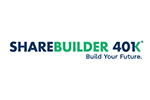
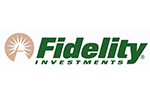
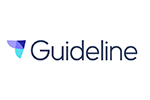
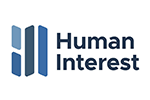
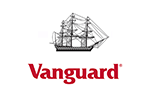
No comments:
Post a Comment